Table of Contents
Praying Mantis Bite- Is it fatal? Find out!
Can a praying mantis bite you? and what to do if you are bitten? You will know everything soon!
Praying mantis is known to be ferocious hunters and are even popular for cannibalizing members of their own species. They have large jaws, long spiny forearms, and super fast reflexes, they do appear to be a great threat to other insects like crickets, moths, and grasshoppers, aren’t they?
But, when it comes to praying mantis bite being harmful to human beings, it is still a doubt for many people. With all the creepy-looking features this insect has, it is quite hard not to think what if they bite you. Seeing a praying mantis in the wild when you are not used to spotting them, can turn out to be a shock for many people. Coming down to praying mantis bite, well, they are capable of biting but they rarely do so.
Despite their over-the-top hunting skills, a praying mantis is highly unlikely to bite you. Why is that so? That’s for you to find out. Keep scrolling…
Praying Mantis Bite- Overview
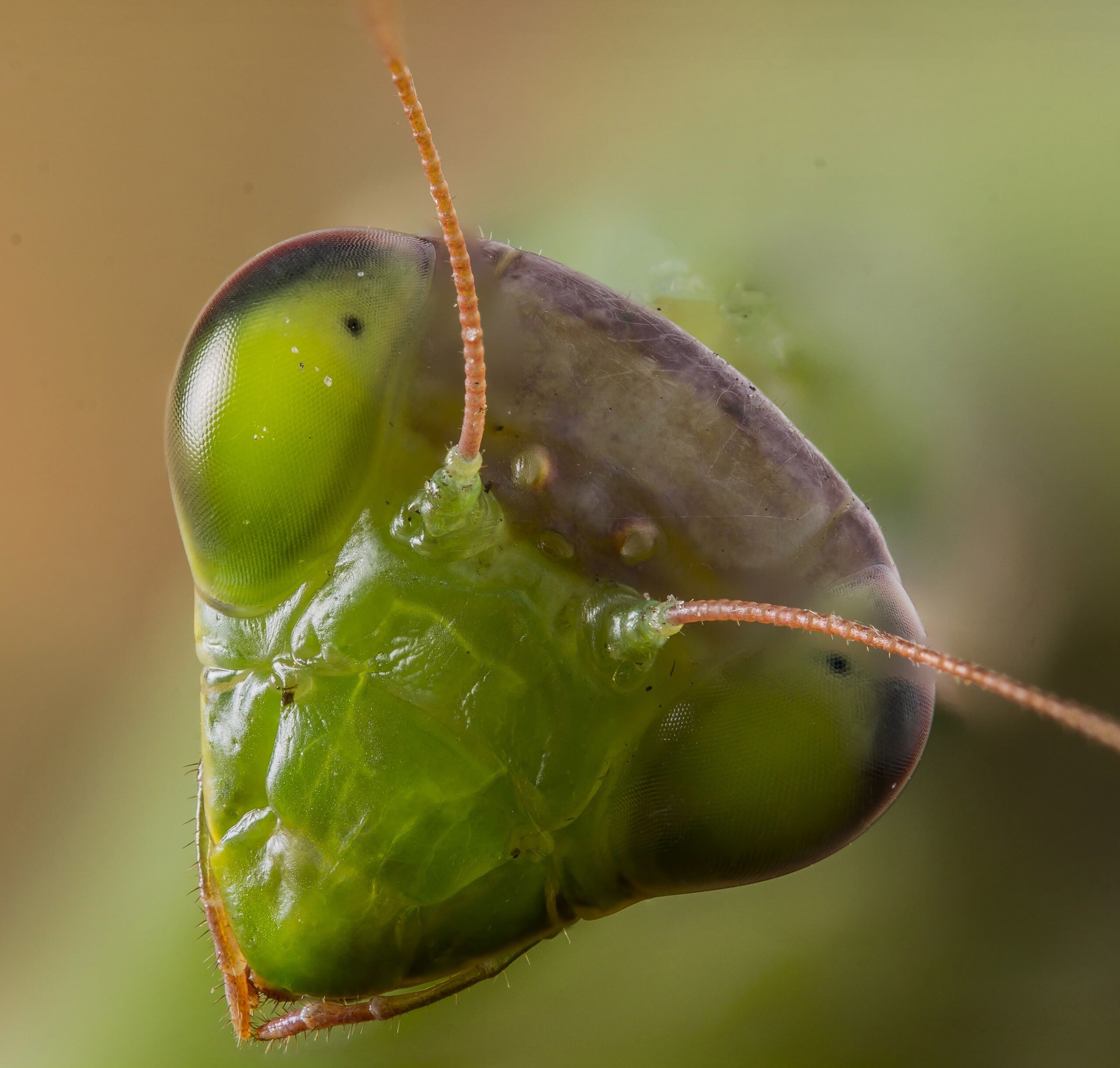
From forests to deserts, you can just spot praying mantis everywhere and anywhere. These insects possess a long body f about 2 to 5 inches (quite long for an insect), based on the species they belong to, their colors vary from green to brown. Adult praying mantis does have wings but they do not make any use of them.
Like all other insects, they have 6 legs, but they only take into use their 4 legs for walking. The front legs are mainly purposed for hunting their prey. They usually relax on the leaves or stems of tall plants, shrubs, flowers, or grasses to hunt.
This is highly beneficial for them because their green or brown color serves as camouflage, letting these creepy insects blend in with the leaves or sticks and wait for their prey to come. When any other small insect comes near or in front of them, they quickly grab them using their front legs. These legs also have spikes to catch hold of the prey so that they can eat appropriately.
Two known traits strengthen the hunting ability of these insects and help praying mantis bite the prey. These are- they have the ability to tune their head 180 degrees unlike other insects- in fact, only two insects are known to be capable of this feature. Another feature is their excellent eyesight which allows these insects to see motion up to 60 feet away (that’s insane).
Eating their prey is not the only way they feed. female mantis sometimes tends to bite the male mantises’ head off once they have mated. This allows the female to have all the nutrients she needs to lay eggs.
With such strong features and ferocious nature, what if praying mantis bite you? Let’s see.
What praying mantis bite in general?
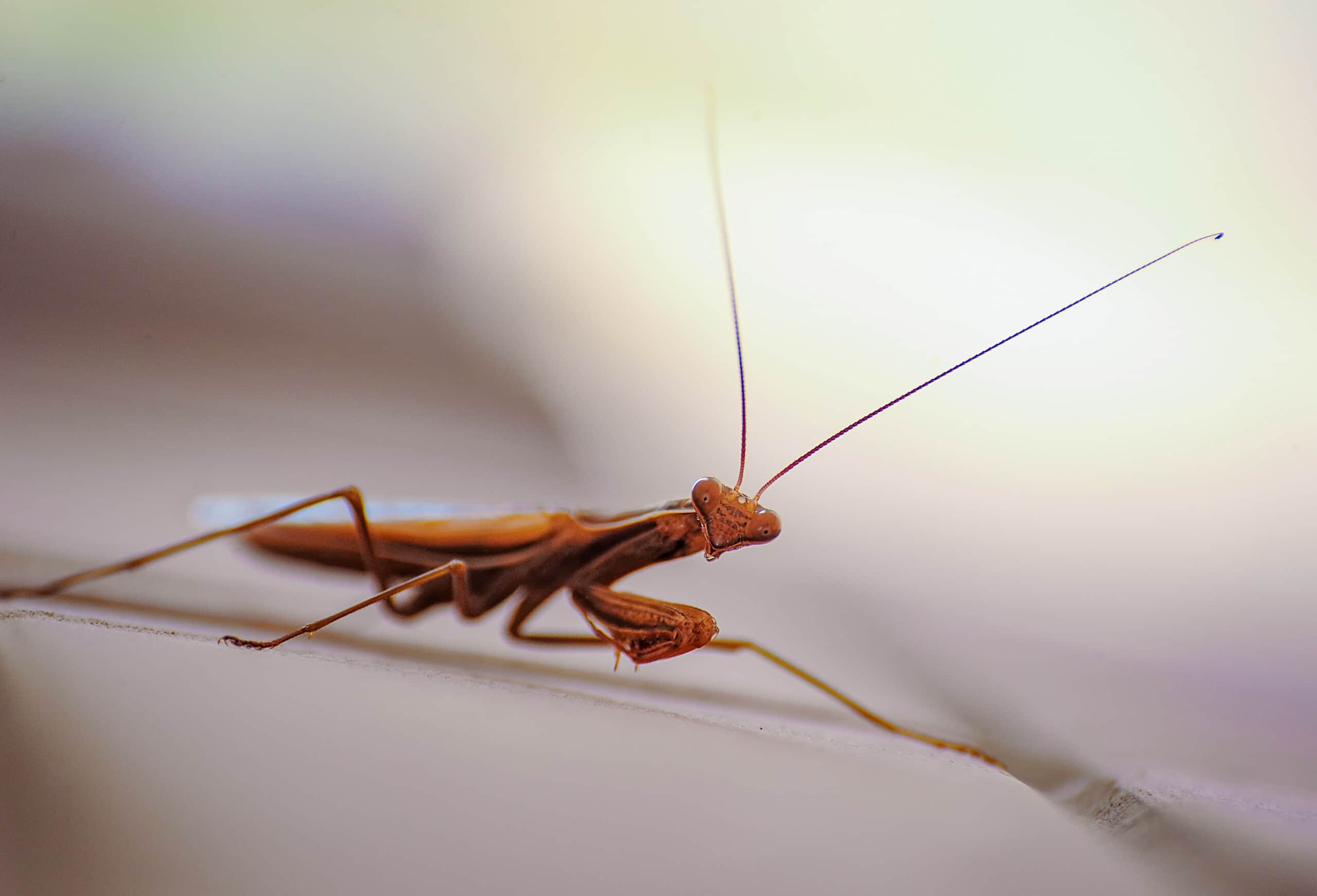
Looking from an utter sustenance point of view, praying mantises have a moving mouth to engulf their favorite prey which is live insects. They do not go after any insects that are already lifeless.
What’s more, measurement or size is also a big factor when it comes to praying mantis bite. While a bigger praying mantis would not bite you quite much based on their principle (eating live insects only), a praying mantis that has the size of fewer than 2 inches, actually cannot bite you. They are just too small to bite and their jaws cannot open wide enough to chew down.
Even if praying mantis is not going to bite you, having one come itself after you is rather nerve-wracking and undesirable enough! If you proceed and continue to push or harass the unfortunate insect, they might resort to pinching your finger with their front legs or even hurting you with a praying mantis bite.
praying mantis insect’s diets are extremely bug-centric, with the main prey or food being crickets, flies, grasshoppers, or common garden bugs. In addition to this, praying mantises grow equipped with piercing mandibles inside their mouths, which are perfect for splitting or ripping apart even the most solid of buggy exoskeletons and even tearing through the tissue of frogs, lizards, and at times even small birds if they get hold of one.
Can praying mantis bite me?
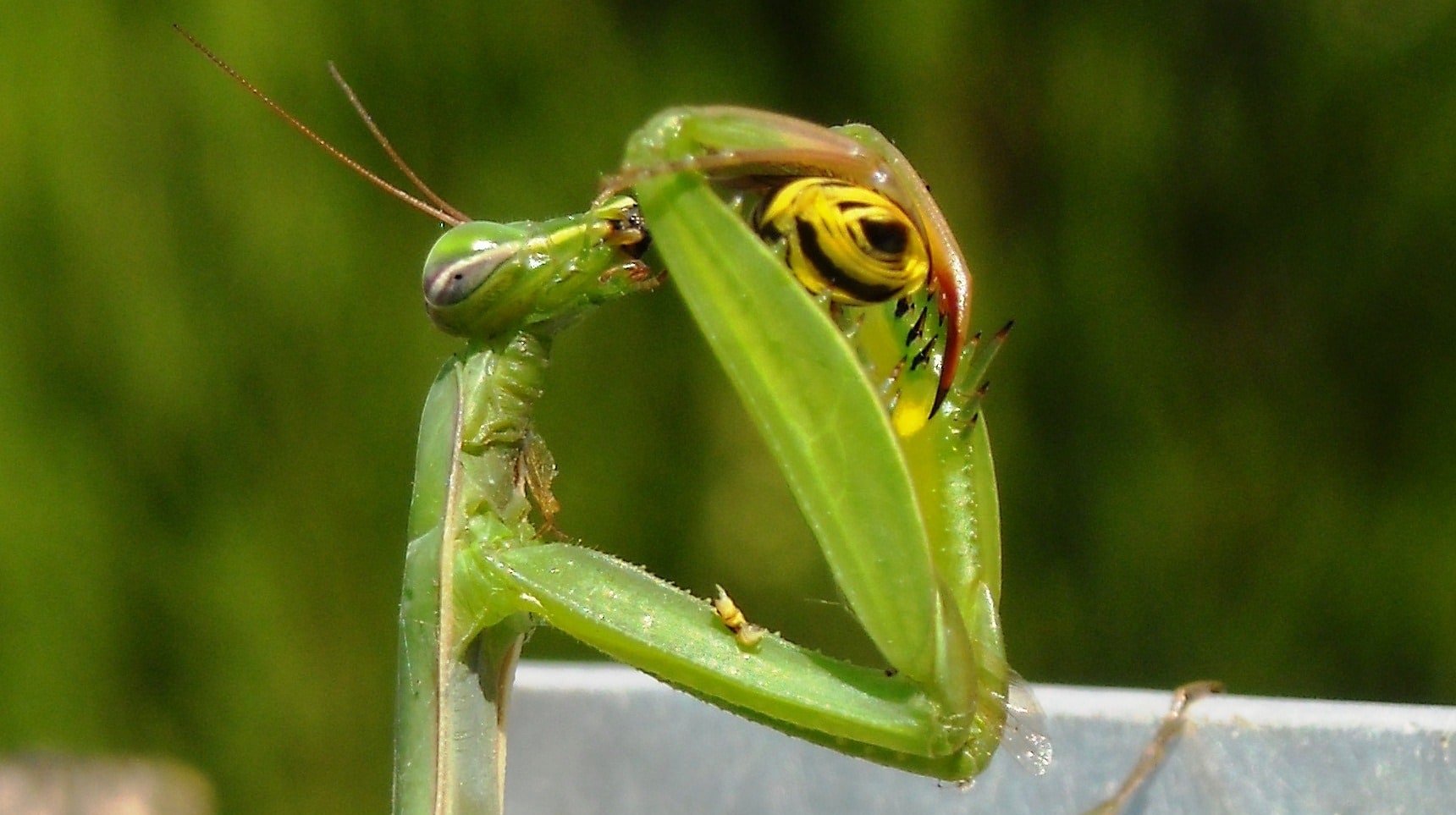
Praying mantis bite live insects usually. They are never eager to feed on dead insects or animals. Despite being so small in size, they are known to feed on lizards, spiders, small birds, and frogs.
They are not known to bite humans but it may be possible under some circumstances. Praying mantis bite humans by accident at times if they spot your finger as prey. But like other animals and insects, they are good at spotting their prey and most unlikely to commit such mistakes when it comes to their food. With such excellent eyesight, they are most likely to be able to recognize something bigger than their usual feeding insects.
It is clear that praying mantis bite is rare for humans, but what if one has bitten you? can it be dangerous enough to see a doctor? Keep reading.
Are praying mantis dangerous?
Unless you happen to be an amphibian or small insect, a praying mantis bite is not fatal for you. The praying mantis bite might be a little bit painful for you but it does not have lasting effects. You are also unlikely to suffer from an allergic reaction following the praying mantis bite.
What to do after praying mantis bite?
Know that these insects are non-venomous which men’s even if they by mistake bite humans, their bite is not poisonous. If you get bitten, all you are required to do is wash your hands quickly as nicely as possible. Here’s how one can do this:
- Wet your hand using warm water.
- Apply a good soap (bar and liquid both are fine)
- Lather both hands well until you start seeing a lot of soap bubbles.
- Rub both the hand together for nearly 20 seconds and make sure you are also rubbing the back of your hands, between the fingers, and risk.
- Rinse both hands using warm water again until the soap wears off completely.
- Dry both hands completely. This is highly important but most people do not pay attention to it. Use a paper or towel to turn the faucet off.
Based on how one has been bitten or acquired a praying mantis bite, you must treat the bite for spotting minor pain or bleeding. But because these insects are not venomous in nature, there’s nothing else you should do.
There are few things one can do to defend themselves against a praying mantis bite if you spot them. The best thing you should do is wear gloves when gardening.
You must also wear long socks and pants while you are outside in tall grass or woods. This helps you protect yourself from all the insects in general as some insects might be venomous.
How to handle a praying mantis after a praying mantis bite?
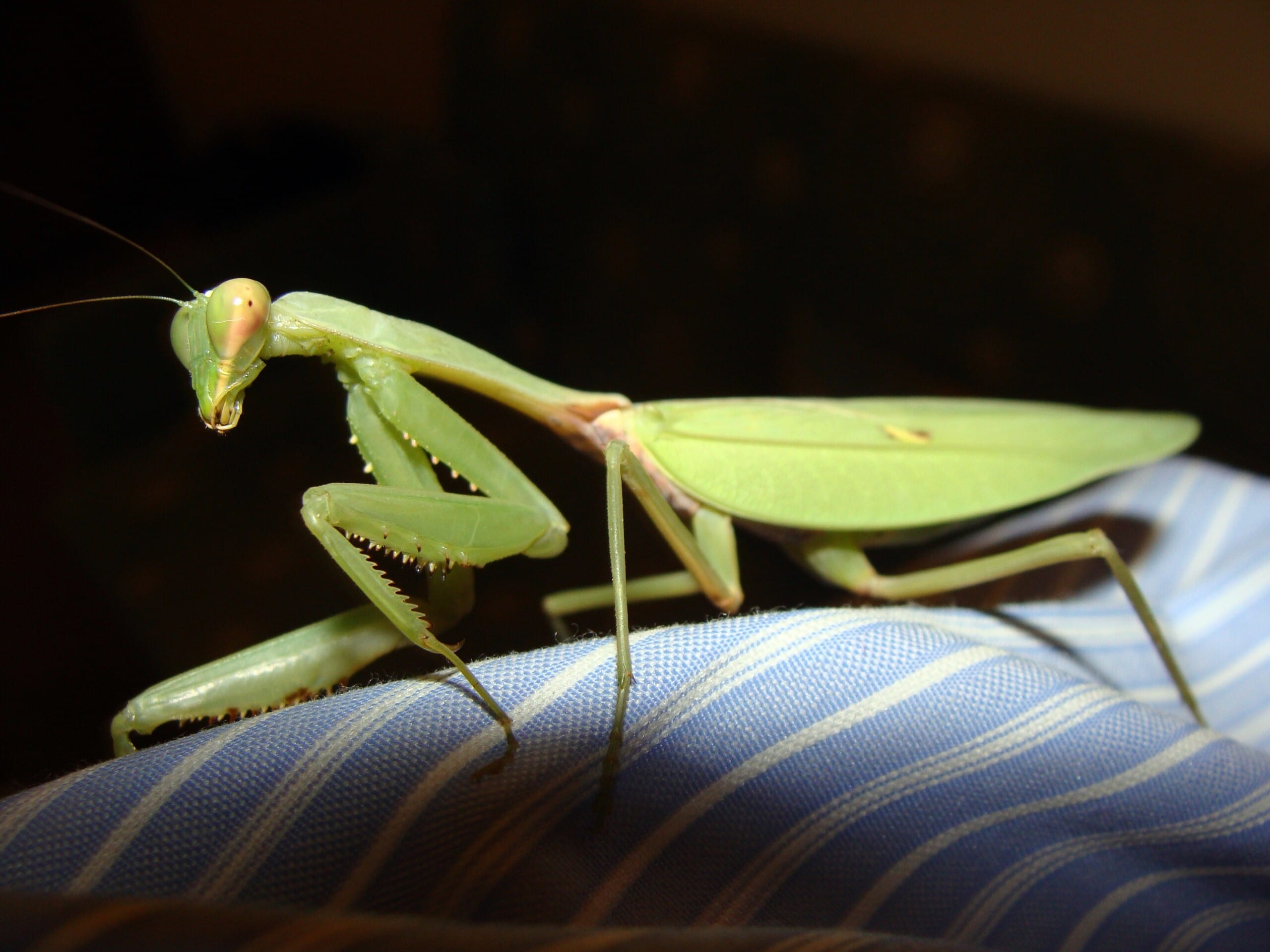
If a praying mantis bites anyone near you or you, they have mistaken you to be an insect (just your finger, do not panic). This does not mean you have to go after the insect or kill it although it might appear creepy sometimes to people. It is best to leave the insect alone in the woods or your garden.
However, most of you might not know this but people like keeping praying mantis as their pets. Notwithstanding their intimidating hunting skills, praying mantises usually make well-behaved pets and can normally be handled securely. If you desire to hold a mantis, just hold your hand either near or in front of the bug. If it wants to be with you as your acquaintance, it will climb your finger.
Let the praying mantis establish the terms of its approach and if it attempts to climb off, permit it to go without trying to restrict it. Attempting to force the insect into a petting assembly may make it feel unsafe, and it might be motivated to bite you to create an escape. Physically restricting the mantis may also induce injury to the insect.
A word for gardeners
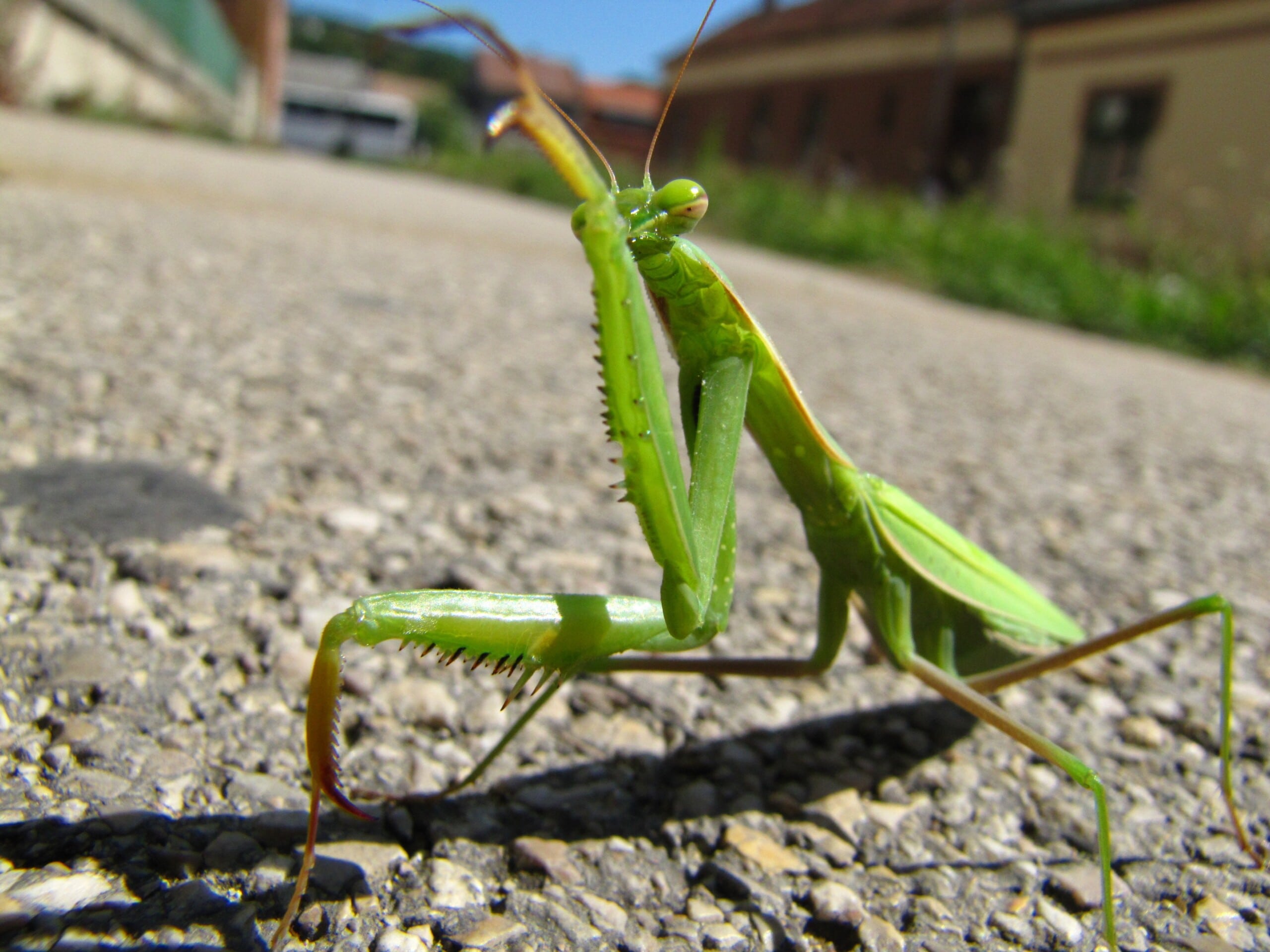
Gardeners who prefer to keep the considerate praying mantis nearby should be cautious not to use (or at least limit the usage) the spraying of insecticides and pesticides. These might destroy pest bugs undoubtedly, but they will also hurt praying mantises in your garden.
Do not let praying mantises fearsome characteristics and cannibalistic status scare you. Praying mantises are quite well-renowned for staying chill and relaxed bug buddies. They might strike and eat insects, but mantises rarely if ever will hurt a person. That is what presents them so welcoming in many gardens as they eat up all the harmful bugs but never hurt the human hand that shelters them.
Final thoughts
A praying mantis bite is highly unlikely. They usually prefer feeding on live insects and they have excellent eyesight which easily helps them differentiate between humans and their prey like crickets and moths.
But even if you get a praying mantis bite, there is nothing to worry about it, just wash your hands thoroughly and you are good to go. They are not poisonous or venomous, so there’s no harm or nothing you should be concerned about.

